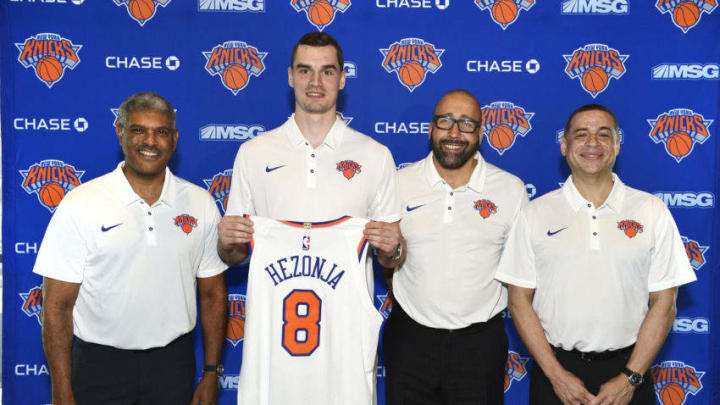The New York Knicks signed polarizing forward Mario Hezonja to a one-year deal. Orlando Magic radio analyst Richie Adubato offered his take.
If you let the public tell the story, the New York Knicks signed a lost cause in Orlando Magic forward Mario Hezonja. Hezonja has struggled mightily through three seasons in the NBA, and thus, has been written off by a vast majority of evaluators.
When one applies the context to the issues that Hezonja has encountered, however, it becomes clear that the odds which have been stacked against him aren’t quite insurmountable.
Hezonja, 23, recently signed a one-year deal with the Knicks worth $6.5 million. It certainly represents the career crossroads that he’s approaching, as the former top-five draft pick has the reputation of a player whose upside is no longer enough to justify a multi-year investment.
According to Marc Berman of The New York Post, Orlando Magic radio analyst Richie Adubato provided vital context: Hezonja’s first three seasons included an indescribably difficult transition.
"“[Europeans] always take time adjusting to our level of play. People don’t realize — they average 18 a game, come in and it’s big adjustment. He’s very talented, you see why they drafted him. Athletic. [He’s] 6-8, runs the floor well, nice-looking shot, range to shoot the 3. But he had to learn the NBA game. It’s so different. Nowadays, so many great athletes. A lot of times when you’re a star at another place and coming off the bench, it’s a new world for you.”"
Considering Hezonja is only three seasons into his NBA career, the moral of the story is quite simple: It’s far too soon to disregard him.
When Hezonja was playing in Europe, he earned the nickname Crobe—a clear combination of his native country of Croatia and his ambitious upside comparison to Kobe Bryant. Leading up to the 2015 NBA Draft, he was likened to another Hall of Famer: Tracy McGrady.
The comparisons were made by scouts and analysts alike, which inevitably created an unrealistic set of expectations for a teenager who was attempting to make the jump to the NBA.
Rather than receiving the touches to play through his inconsistencies and find his way, Hezonja never saw his usage rate rise above 18.8—until 2017-18.
In 2017-18, Hezonja produced a usage rate of 19.9. He also set career-highs in points, rebounds, steals, and three-point field goals made per 36 minutes, as well as field goal percentage and two-point field goal percentage.
Hezonja also posted the best marks of his career in RPM, Offensive RPM, Defensive RPM, Win Shares, Offensive Win Shares, Defensive Win Shares, BPM, Offensive BPM, and Defensive BPM—tremendous signs of improvement.
Considering he’s only 23 years of age, it stands to reason that said improvement will continue if his work ethic remains strong.
The primary difference in 2017-18 was the manner in which he was used. He spent 58 percent of his minutes at power forward, which is a stark contrast to the six percent and 18 percent marks from the 2015-16 and 2016-17 campaigns.
Adubato conceded that defense remains an issue, but stated that there isn’t a true weakness in his game other than that correctable flaw.
"“Defensively he needs some work,’’ Adubato said. “There’s no weakness in his game, except the defensive end. He has to work harder there and it will come, I believe…The lateral movement, I don’t see it as being a problem, but may have to work on it. But he’s an athlete. He has to do more drilling and understand how important it is.“"
Standing at 6’8″ with a 6’10” wingspan and high-level athleticism, Hezonja has the physical tools to become a solid defender—and David Fizdale will push him to do so.
To be clear, Adubato isn’t saying that Hezonja is a fundamentally polished player who doesn’t need to improve any further. Instead, he’s stating that the raw talent is in place for Hezonja to refine his current skill set—a massive step ahead of having to add the skills from scratch.
Only time will tell what the future holds for Hezonja, but even the most skeptical of viewers must acknowledge: A transition from Europe and an ill-timed injury can delay any player’s progress.
Must Read: The five most impressive Knicks from Summer League
In 2018-19, Mario Hezonja will have a chance to change the narrative and prove that he belongs as a member of the New York Knicks.
